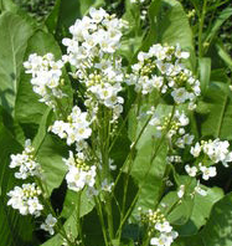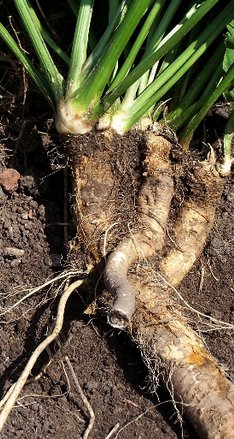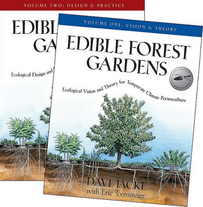 Armoracia rusticana, horseradish Armoracia rusticana, horseradish We can think of at least 180 great forest garden & perennial crops for cold climate Sweden. Want to hear about them? Over the course of the next year we will profile 5 a week on the blog. Perennial plants and crops offer a low energy, oil & resource input based foundation for future-proof agricultures. By default if an agriculture is to be called regenerative the bottom line is that it must be soil building, not soil depleting. Relentless deep tillage & poor soil husbandry (wifery?!) contributes to the majority of the 24 billion tons of topsoil lost every year on planet water. We are going to be focused on holistic polyculture grazing and perennial production at ridgedale over most of the site as this represents the most effective way to restore our degraded landscape, produce high value produce and ensure the future resource base we are managing holistically for in our decision making.  Genus Armoracia Species rusticana Common Name horseradish Form herb Habit clumping Origin Europe Light sun Moisture mesic Edible culinary Other dynamic accumulator Horseradish has been cultivated since antiquity. According to Greek mythology, the Delphic Oracle told Apollo that the horseradish was worth its weight in gold. Horseradish was known in Egypt in 1500 BC. Dioscorides listed horseradish under Thlaspi or Persicon; Cato discusses the plant in his treatises on agriculture, and a mural in Pompeii shows the plant. Large quantities of this plant can be poisonous due to its content of volatile oils. Traditional texts suggested possible thyroid function depression. Contraindicated with chronic nephritis, hepatitis, gastro-oesophageal reflux or hyperacidity conditions, and inflammatory bowel conditions. Avoid during pregnancy and lactation (moderate amounts with food ok). Young root can be eaten raw or cooked. The grated root is used to make the condiment 'Horseradish sauce', this has a hot mustard-like flavour. The sauce is best used uncooked or gently warmed, heating it will destroy the volatile oils that are responsible for its pungency. The root is a rich source of sulphur. Fresh roots contain the glycoside sinigrin - this is decomposed in the presence of water by the enzyme myrosin, producing mustard oil which gives the root its hot flavour. The fleshy roots can be up to 60cm long and 5cm thick. The plant is fully hardy and can be left in the ground all winter to be harvested as required. Alternatively, the roots can be harvested in early winter and stored for later use, they will retain their juicy state for some time if stored in dry sand. Young leaves can be eaten raw or cooked. A very strong flavour, though nice when added in small quantities to the salad bowl. Seeds can be sprouted and eaten in salads. Horseradish is a very pungent stimulant herb that controls bacterial infections and can be used both internally and externally. The plant is a powerful stimulant, whether used internally as a spur for the digestive system or externally as a rubefacient. It should not be used internally by people with stomach ulcers or thyroid problems. The roots are antiseptic, aperient, digestive, diuretic, expectorant, rubefacient and stimulant. They should be used in their fresh state. An infusion is used in the treatment of colds, fevers and flu and is of value in the treatment of respiratory and urinary tract infections. A sandwich of the freshly grated root is a traditional remedy for hay fever. The plant is antibiotic against gram-negative and gram-positive bacteria and also pathogenic fungi. It is experimentally antitumor. Externally, a poultice made from the roots is used to treat pleurisy, arthritis and infected wounds. OUR FRIENDS AT PFAF HAVE AN AMAZING DATABASE OF SPECIES (UK BASED);Last couple of days to sign up to our newsletter if you want to be in to win a free copy of the awesome Edible Forest Garden manual Sign up to our newsletter for articles/ updates you choose & fortnightly awesome book giveaways... We're going to celebrate 2014 by giving away a copy of Edible Forest Gardens 1 & 2 to thank our subscribers. These books are epic to say the least, make sure you sign up to our customizable newsletter for details... Seasons greetings!
0 Comments
Leave a Reply. |
Details
Like us on FB Below for regular updatesStay up to date with customized updates you want to receive
Upcoming coursesArchives
December 2016
Categories
All
|

 RSS Feed
RSS Feed